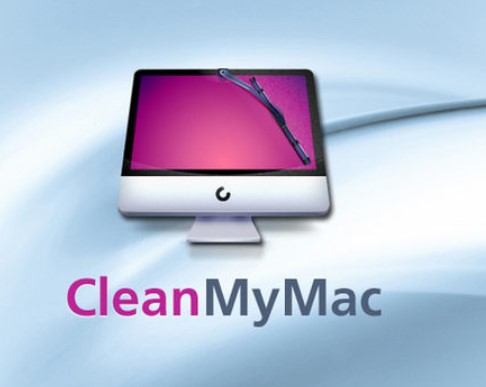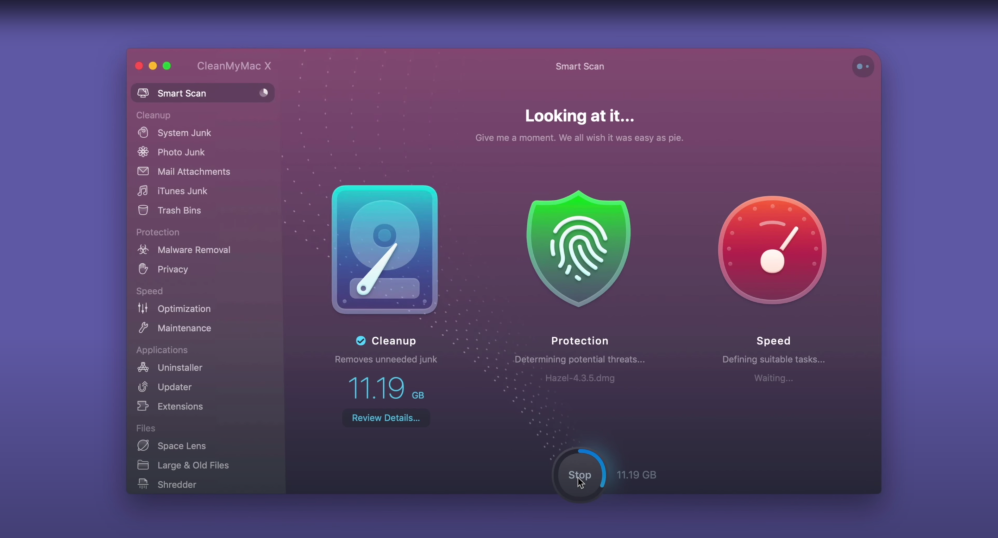- CleanMyMac X 4.6.9 Crack is the one of the best Mac optimization software. It cleans junk files, improve Mac security, Uninstall unwanted apps, etc. It cleans all kind of malwares like ransomware, trojan, spyware, adware, etc. Buy CleanMyMac X to keep your Mac clean, running fast, and protected from adware.
- Whether it's deleting unneeded junk or freeing up some memory, CleanMyMac X is a life-saver The average lifespan of a MacBook – Pro or otherwise – is about 4 years.
An easy-to-use app that lets you encrypt files with AES-256 encryption and then send them to friends or coworkers on both Mac and Windows. Clean, protect and speed up your Mac with the new CleanMyMac X. It scans the entire macOS, removes junk and malware and brings a Mac back to its original fast performance.
Older Mac models have removable batteries, which meant once a battery was dead, you could buy and fit a new one. Or if it was still under warranty, Apple will replace it for free. But chances are if you've got a Mac with a removable battery, the warranty has long-since expired.
So what can you do? How do you replace a Mac battery?
In this article, we've taken a look at the Apple battery replacement program and what else you can do to replace or extend Mac's battery life. Ipack 2 3 4 – full featured compressed archive manager.
How to replace a Mac battery?
1. Check your battery cycle count
Every Mac has a battery cycle, depending on when it was manufactured.

Here is how long each of them lasts, according to Apple:
- MacBook (2009 - 2017 models): 1000 cycles
- MacBook (13-inch Aluminum, Late 2008): 500 cycles
- MacBook (all earlier models, except the one above): 300 cycles
- MacBook Pro (most models): 1000 cycles
- MacBook Pro (15-inch Late 2008): 500 cycles
- MacBook Pro (every other 2008 model): 300 cycles
- MacBook Air (most models): 1000 cycles
- MacBook Air (Mid 2009): 500 cycles
- MacBook Air (original and late 2008 model): 300 cycles
As a general rule, modern models have longer battery charging cycles. Charging cycles don't work the way many people think they do. Say you charge your Mac to 100% before going out, then when out, you use 50% of it. Plug it back in, charge it back up to 100%, and then do the same the next day.
All of that counts as one full charging cycle. If you've got a modern MacBook (Air or Pro), built after 2010, then chances are you've got 1000 charging cycles. So once you've done the above 1000 times, you're probably going to find that it needs to be plugged in when it comes with you. It won't work for long, or at all, without a plug anymore.
2. Check your battery status
Thankfully, Apple doesn't leave you in the dark when it comes to a Mac battery's health.
You can check its status and its current cycle count pretty easily. To check the cycle count, follow these steps:
- Go to the Apple () menu in the top toolbar and choose About This Mac.
- Click System Report.
- In the Hardware section, click Power.
- Listed under Health Information is the current Cycle Count.
- It also provides the Condition status of your battery.

Here is how long each of them lasts, according to Apple:
- MacBook (2009 - 2017 models): 1000 cycles
- MacBook (13-inch Aluminum, Late 2008): 500 cycles
- MacBook (all earlier models, except the one above): 300 cycles
- MacBook Pro (most models): 1000 cycles
- MacBook Pro (15-inch Late 2008): 500 cycles
- MacBook Pro (every other 2008 model): 300 cycles
- MacBook Air (most models): 1000 cycles
- MacBook Air (Mid 2009): 500 cycles
- MacBook Air (original and late 2008 model): 300 cycles
As a general rule, modern models have longer battery charging cycles. Charging cycles don't work the way many people think they do. Say you charge your Mac to 100% before going out, then when out, you use 50% of it. Plug it back in, charge it back up to 100%, and then do the same the next day.
All of that counts as one full charging cycle. If you've got a modern MacBook (Air or Pro), built after 2010, then chances are you've got 1000 charging cycles. So once you've done the above 1000 times, you're probably going to find that it needs to be plugged in when it comes with you. It won't work for long, or at all, without a plug anymore.
2. Check your battery status
Thankfully, Apple doesn't leave you in the dark when it comes to a Mac battery's health.
You can check its status and its current cycle count pretty easily. To check the cycle count, follow these steps:
- Go to the Apple () menu in the top toolbar and choose About This Mac.
- Click System Report.
- In the Hardware section, click Power.
- Listed under Health Information is the current Cycle Count.
- It also provides the Condition status of your battery.
What the above shows is your current Cycle Count. Compare against the model you've got and the number of cycles it has left.
Within System Information, it should also show one of four possible health statuses: Java create new file with text.
- Normal: Working as you would expect;
- Replace Soon: It doesn't hold as much charge as it did originally;
- Replace Now: Needs to be replaced;
- Service Battery: Take your Mac to an Apple-certified technician.
Assuming your Mac battery needs replacing, let's look at how this can be done or ways to prolong the battery's life until you are ready to buy a new Mac.
3. Disable battery-draining apps
Some apps use more power than others.
And with some of these, you might not even know they're draining the battery. How can you find out and stop apps from running the battery dry?
- Download CleanMyMac X for free here (a really useful app that makes Mac perform better);
- Click on the Heavy Memory Consumers feature: It shows what uses the battery the most;
- Another tool is Launch Agents: this shows what is being launched and running in the background when switched on;
- Between them, you can quickly identify apps to delete and take out of the startup sequence. CleanMyMac X can take care of both to help your Mac consume less power when on.
So, if you've given that a go, checked the health status, and battery life is still low, what are the options?
4. Check your Apple Warranty
Cleanmymac X 4 4 1000 Series
In the U.S., faulty or degraded batteries can be replaced for free one year after purchase. In the EU and Australia, consumer law ensures that Apple needs to replace these for up to three years after purchase.
Assuming you have a Mac that is older than this and has battery problems, Apple Care extended warranty coverage for up to three years. That might solve it. A new battery might be needed for any Mac that is older and out of warranty or Apple Care coverage,
Cleanmymac X 4 4 1000 Lb
5. Replace your Mac battery at Apple Store or service center
The cost of a new battery and repairs can be several hundred dollars. If there is no Apple Store near you, Apple will always recommend certified third-party specialists. Either will have the tools and parts to make repairs and install a new battery.
The battery is really important, and it's not easy to remove most of them. So we wouldn't recommend a third-party computer store that doesn't have Apple certification.
Would it be easier to save the money and effort and put it towards a new Mac? When a battery dies, there is a good chance that other hardware within the device is starting to feel its age too. Sooner or later, a replacement might be needed.

